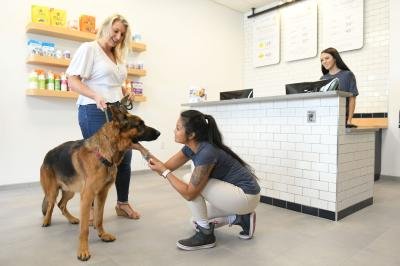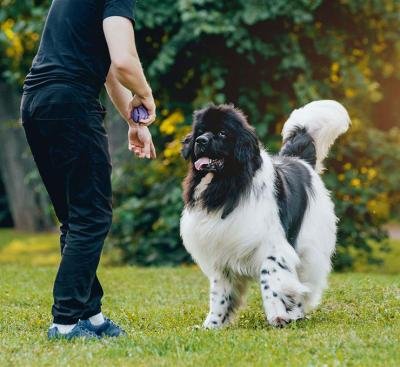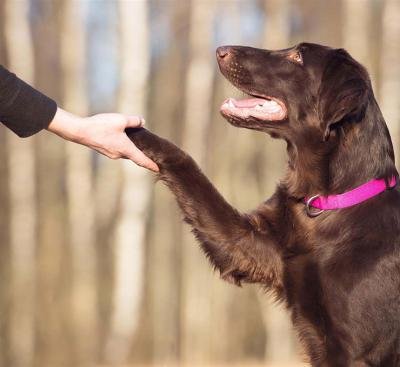The Ultimate Guide to Dog Care: Tips for a Healthy, Happy Pup

Bringing a dog into your life is one of the most fulfilling decisions you can make! As pack animals, dogs thrive on companionship, exercise, and affection, and they bring boundless joy and loyalty to their human families. But caring for a dog goes beyond just providing food and shelter. Here’s a comprehensive guide to ensure your furry friend stays happy, healthy, and safe throughout their life.
1. Understanding Your Dog’s Needs
Dogs are individuals with unique personalities, and their care should reflect that! A small lap dog may thrive in a cozy apartment, while a large, high-energy breed will need plenty of outdoor space. Knowing your dog’s breed, energy level, and age will help you tailor their care effectively.
2. A Balanced Diet

Proper nutrition is a cornerstone of dog health. Just as in humans, what your dog eats affects their energy levels, weight, coat quality, and overall health.
- High-Quality Dog Food: Look for foods rich in protein, healthy fats, and limited fillers. Your vet can recommend brands or formulas suited to your dog’s age, breed, and health.
- Fresh Water: Always keep a bowl of clean, fresh water available. Hydration is vital for dogs, especially in warm weather or after physical activity.
- Avoid Toxic Foods: Many human foods, like chocolate, grapes, onions, and avocados, can be harmful to dogs. Be mindful of what they eat and avoid table scraps.
3. Regular Exercise and Mental Stimulation

Exercise is critical for your dog’s physical health, mental well-being, and emotional happiness. How much exercise your dog needs will depend on their age, breed, and energy level.
- Daily Walks: Aim for at least two 30-minute walks daily for most dogs. High-energy breeds might need more, while older or smaller dogs may require less.
- Playtime: Games like fetch, tug-of-war, or even an indoor hide-and-seek session stimulate your dog’s mind and strengthen your bond.
- Puzzle Toys and Interactive Games: Dogs are intelligent creatures who benefit from mental challenges. Puzzle toys or treat-dispensing toys can help keep their minds sharp.
4. Grooming Essentials

Regular grooming keeps your dog looking their best and helps you check for potential health issues, such as skin irritations, ticks, or unusual lumps.
- Brushing: Dogs with long hair need daily brushing, while short-haired breeds can usually get by with weekly grooming. Brushing also reduces shedding and keeps the coat shiny.
- Bathing: Generally, dogs only need baths every few months unless they get dirty. Over-bathing can dry out their skin.
- Nail Trimming: Trim your dog’s nails every month. Long nails can cause discomfort and lead to problems with mobility.
- Dental Care: Brushing your dog’s teeth regularly can help prevent gum disease and bad breath. Dog dental treats and chew toys also aid in keeping teeth healthy.
5. Regular Veterinary Checkups
Routine vet visits are essential for preventative care and early detection of potential health issues.
- Vaccinations: Keep your dog’s vaccinations up to date to protect them from diseases.
- Parasite Prevention: Flea, tick, and heartworm prevention is crucial, especially if your dog spends a lot of time outdoors.
- Annual Exams: A yearly checkup helps monitor your dog’s health and catch any early signs of illness. Senior dogs may benefit from biannual visits.
6. Training and Socialization

Training and socializing are foundational for a well-behaved, confident, and happy dog.
- Basic Commands: Teaching commands like sit, stay, and come is essential for safety and communication.
- Positive Reinforcement: Reward-based training builds trust and encourages good behavior without fear.
- Socialization: Expose your dog to various people, places, and other pets. This reduces anxiety and helps prevent aggressive or fearful behavior.
7. Providing a Safe and Stimulating Environment
Dogs are naturally curious and can be prone to accidents, especially when they’re young. Ensuring a safe environment prevents injuries and mishaps.
- Puppy-Proofing: Store dangerous items, such as cleaning supplies, in dog-proof cabinets. Keep small objects and chewable items out of reach.
- Secure Outdoor Space: If you have a yard, ensure it’s fenced so your dog can’t wander off or encounter dangerous animals.
- Comfortable Sleeping Area: Dogs need a cozy spot where they can relax, feel secure, and get undisturbed sleep.
8. Understanding Behavioral Changes
Changes in your dog’s behavior can sometimes signal underlying issues.
- Monitor Mood Swings: If your dog seems more withdrawn, aggressive, or anxious than usual, it could indicate health problems or stress.
- Seek Professional Help: If behavioral issues persist, consult a vet or a professional trainer. Early intervention can help address many problems.
9. Travel and Boarding Considerations
If you travel frequently, making appropriate arrangements for your dog’s care is crucial.
- Safe Car Rides: Invest in a secure crate or harness for car trips. Never leave your dog alone in a parked car, especially in extreme temperatures.
- Quality Boarding or Pet Sitters: Research reputable boarding facilities or pet sitters, ideally those with good reviews and positive recommendations.
- Acclimation to Change: If your dog will be boarded, try short stays initially to ease them into the experience.

Comments